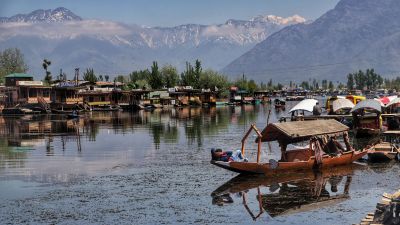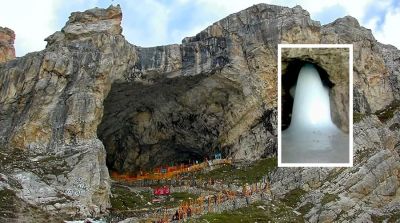Understanding the Geological Wonders of Sonmarg
Sonmarg, also known as the "Meadow of Gold," is a small town located in the Ganderbal district of Jammu and Kashmir, India. It is not only a popular tourist destination but also a geological wonder. The region is blessed with stunning natural beauty, including majestic mountains, sparkling rivers, and breathtaking glaciers. In this blog post, we will dive deep into the geological wonders of Sonmarg and explore the fascinating landscape that has captivated visitors for centuries.
1. Himalayan Mountain Range
The first and foremost geological wonder of Sonmarg is its proximity to the mighty Himalayas. The town lies at the base of the Himalayan Mountain Range, which is the highest and youngest mountain range in the world. The Himalayas are not only a spectacular sight to behold but also an important geological phenomenon.
This mountain range was formed around 70 million years ago when the tectonic plates of the Indian subcontinent collided with the Eurasian plate. The collision resulted in the uplift of the Himalayas, creating towering peaks, deep valleys, and breathtaking landscapes. Sonmarg provides an excellent vantage point to witness the grandeur of this geological marvel.
2. Thajiwas Glacier
Sonmarg is home to the famous Thajiwas Glacier, which is one of the major attractions in the region. The glacier is a natural wonder formed by the accumulation of snow over thousands of years. It is located at an altitude of approximately 9,186 feet and offers magnificent views of the surrounding mountains and valleys.
Thajiwas Glacier is not only a visual treat but also an important source of freshwater for the region. The melting water from the glacier feeds the Nallah Sindh River, which flows through Sonmarg and provides a lifeline to the local ecosystems and communities.
3. River Sindh
The picturesque River Sindh flows through Sonmarg, adding to its geological charm. The river originates from the mighty glaciers of the Himalayas and meanders through the region, creating stunning landscapes along its path. The crystal-clear waters of the River Sindh are a sight to behold and attract many visitors.
The river also plays a crucial role in shaping the geography of Sonmarg. Over millions of years, the River Sindh has carved deep valleys, formed picturesque meanders, and created fertile plains. It is a living testament to the power of water in shaping the Earth's surface.
4. Geological Formations
Sonmarg is adorned with various geological formations that showcase the Earth's dynamic processes. The region is dotted with limestone hills, shale formations, and sedimentary rocks, which offer insights into the geological history of the area.
One notable geological formation in Sonmarg is the Baltal Valley. This valley is characterized by steep cliffs, rocky terrain, and unique rock formations. It is a result of the geological forces that have shaped the region over millions of years. The Baltal Valley serves as a significant camping site for pilgrims embarking on the annual Amarnath Yatra.
Conclusion
Sonmarg is more than just a beautiful tourist destination; it is a geological wonderland. From the majestic Himalayas to the mesmerizing Thajiwas Glacier and the meandering River Sindh, the region offers a fascinating insight into the Earth's geological processes. The geological formations scattered throughout Sonmarg are a testament to the immense forces that have shaped our planet over millions of years. So, if you are a nature lover or someone interested in the Earth's history and geology, a visit to Sonmarg should definitely be on your bucket list.
Remember to share this blog post with your fellow travel enthusiasts and let them discover the geological wonders of Sonmarg!
Disclaimer : The information provided in this blog is for general informational purposes only. While we strive to keep the content accurate and updated, TravelSetu assumes no liability for errors or omissions. If you believe any part of this blog infringes your rights or causes concern, please notify us immediately at info[at]travelsetu[dot]com so that appropriate action can be taken.

















